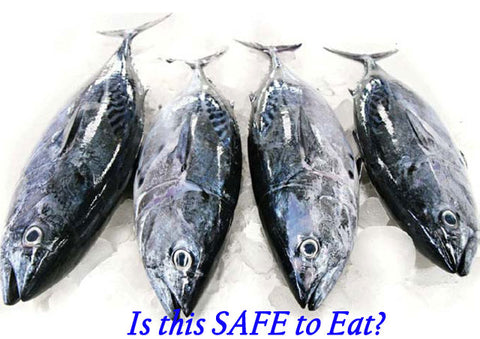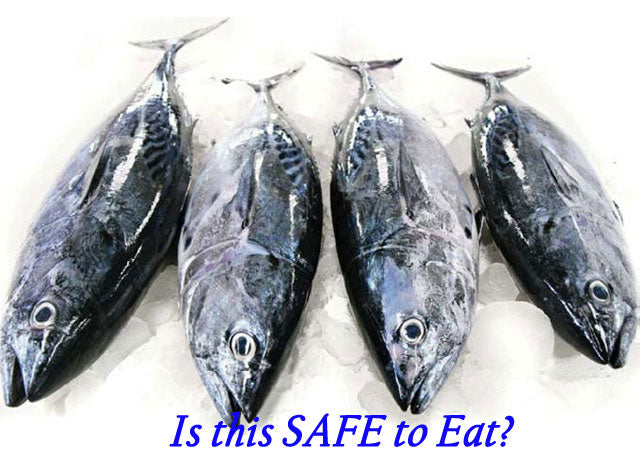Mercury in Seafood is #1 Consumer Food Safety Concern

Los Angeles, CA – August 22, 2022
Science has brought new technology to our docks, retail stores and our home to be able to know with a bit more assurance that the fish we have to eat is safe. But it isn't easy to follow all of the information.
Safe means that mercury levels can be tested to parts per million (ppm) which doesn't sound like much, but the FDA and the EPA has set levels of 1.0 ppm for fish that cannot be sold.
Mercury is a naturally-occurring chemical element found in rock in the earth's crust, including in deposits of coal. On the periodic table, it has the symbol "Hg" and its atomic number is 80. It exists in several forms. People are exposed to mercury is by eating fish and shellfish that have high levels of methylmercury, a highly toxic form of mercury, in their tissues. Exposure at high levels can harm the brain, heart, kidneys, lungs, and immune system of people of all ages. High levels of methylmercury in the bloodstream of babies developing in the womb and young children may harm their developing nervous systems, affecting their ability to think and learn.
It's interesting and a bit disconcerting to realize exactly how often we eat food that we really have no idea where it comes from, and more exactly what potentially toxic items are in it. The real danger is that most of the toxicity effects come from the cumulative ingestion of these elements in our bodies.
People who eat a lot of seafood are at greatest risk. Per “Transforming Food Systems for Affordable Healthy Diets”, UN Food and Agriculture Organizations, 2020, more than 3.3 billion people around the world get at least 20% of their daily animal protein intake from fish. So telling someone to not eat fish at all isn't possible for many. Plus, fish is a good source of protein and nutrition. This EPA & FDA chart can help you choose which fish to eat, and how often to eat them, based on their mercury levels.

The good news is that there are a few companies like Safe Catch, which tests every fish for mercury and Wild Planet that utilize annual third-party testing protocols (source tuna using pole and troll (also called pole and line) methods, following the guidance of the Monterey Bay Aquarium Seafood Watch® program), and some grocery chains, and restaurants are starting to use technology to measure and deliver seafood with acceptable levels of mercury.
What about catching your own? Yes, wild catch is always better, but limit your intake and know the fish and seafood that are likely to be better choices of lower mercury. Fish accumulate more mercury the older and the bigger they are. Some fish caught by family and friends, such as larger carp, catfish, trout and perch, are more likely to have fish advisories due to mercury or other contaminants. State advisories will tell you how often you can safely eat those fish.
For the meantime, look, ask and act based on what you can find out. Meanwhile, be careful out there!



Share:
The Truth about Enriched Air Diving
WHY YOU NEED A DIVE COMPUTER